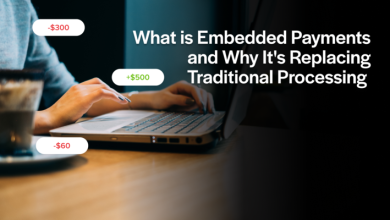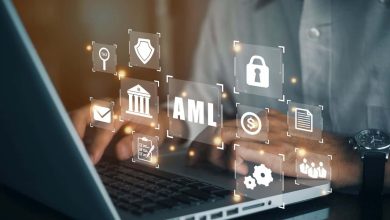
This article was co-authored by Nigel Nicholson, Chief Executive Officer and Craig Heschuk, EVP North America of GreyList Trace Limited.
As professionals working for many years in financial asset tracing, we deeply admire the community of forensic accountants, lawyers, litigation funders, law enforcement agencies, and business intelligence professionals who have developed great skills in financial asset recovery on a global scale. Despite this expertise, asset tracing remains a game of catch up. Criminals are too often one step ahead as they use every possible means, including cutting edge technology, to hide their ill-gotten gains. As a result, the victims of fraud face a daunting challenge when they seek to recover assets. Everyone is chasing a favorable outcome for their clients, but this can often take years to materialise.
The good news is that, as an industry, we continue to benefit from advances in technology and the use of artificial intelligence (AI) tools has the potential to be transformational. Using sophisticated algorithms, it is now possible to achieve far better outcomes in terms of speed, cost, and accuracy, while also removing much of the “heavy lifting” associated with locating undisclosed assets, and in particular hidden bank accounts.
The legislative framework
In the UK and US alone, it is estimated that US$550 billion is laundered each year. In his pre-inauguration announcements, President Biden has made the fight against corruption “a top domestic and national security priority”. For the first time ever, the US Corporate Transparency Act passed by Congress on January 1, 2021, will require millions of US registered businesses to report their true beneficial ownership to the US Treasury’s Financial Crimes Enforcement Network, as part of a clampdown on anonymous shell companies. The jury may still be out on the effectiveness of this legislation but there are green shoots of change.
In Europe, after years of good intentions, the EU has been stung into action by a massive €230 billion money laundering fraud at the Estonian branch of Danske Bank, Denmark’s largest lender and the disappearance of up to €500 billion routed by the daughter of the former Angolan President through banks in London and Brussels. In November 2020 EU Finance Ministers agreed to create an integrated AML watchdog with supranational power to facilitate cross-border law enforcement.
These are signs of progress, but laws are not enough. There has to be the political will to implement and enforce recovery, and this can be enhanced by hard evidence developed quickly and effectively. AI tools can help convert the painful and time-consuming search for a “needle in a haystack” to something more focused and achievable, however, the asset investigator is faced with the compelling necessity to ensure that any results are admissible in courts worldwide. Being on the side of the angels is not without challenges
The Role of Artificial Intelligence in Combatting Fraud
Given that the fraud recovery battle is moving inexorably towards cyberspace, adopting technologies that will enhance investigations and shift the advantage in favour of the “good guys” is now mission-critical. AI permits the global investigation of vast repositories of data to decipher a sophisticated criminal network of special purpose corporations and bank accounts.
Any national law enforcement agency will tell you the cross-border task is growing exponentially. While the UK’s Serious Fraud Office might be able to find monies hidden in the UK fairly easily, once assets move overseas the challenge is tough.
Other AI techniques can scrape information from the web, regulatory databases and social media accounts to fit together the pieces of a jigsaw puzzle and predict the images on the missing pieces when the investigator doesn’t necessarily know what the full picture looks like.
In cases of money laundering, AI can identify connections with sanctioned and blacklisted banks or sanctioned and undesirable organisations. It is often possible to keep a name out of the “headlines” in such situations but suppressing details of email addresses or other digital identifiers is much more difficult. AI can also establish communications patterns among such groups of individuals.
One of the reasons such a process is feasible is because, despite the ongoing evolution of communications technology, the banking industry and many other sectors are still heavily reliant on the use of something relatively old-fashioned: an individual’s email address. Banks, for regulatory and operational purposes, rely on hierarchies to filter incoming email communications and know whether those email addresses belong to customers or not. So, in establishing connections, desirable or otherwise, an email address remains a prime source of identification and verification. In fact, it is becoming even more integral to banking relationships than it ever was.
AI in action
Technology means it now takes only a few seconds of processing time to prove conclusively, and totally legally, whether any two email addresses have ever communicated with each other, in one direction or both. A rather useful tool when those individuals have denied, including in court, that they have ever communicated. Or where an organisation suspects that a former partner or employee has breached a standstill agreement and is already trying to poach former customers or employees. And because it is possible to establish within a few weeks every bank in the world in which an individual, or any of that individual’s proxies, has an account, it is possible to establish connections with sanctioned banks or organisations in just a few days, or even hours.
The fact that the AI algorithms know no borders is another key element. Tracing connections in Japan, Ecuador, North Korea or Wales becomes no more difficult than tracing them domestically, because the technology is testing communications, which cuts through any and all physical and jurisdictional barriers. We are all familiar with cases that involve a company established in an initial jurisdiction that becomes a director and shareholder of a company in a second jurisdiction, with that company, in turn, becoming a director and shareholder of another company until the ownership of the asset or of the bank account has travelled through 30 companies in 30 countries, many of which still have secrecy rules at some level or another.
It is company 30 that has the bank account where the money resides. Using conventional techniques, finding that connection would require following an incredibly complex ownership chain, and probably failing. With the effective use of AI, the algorithm goes straight to the answer. It finds the connection at the end of the chain. And if there is a need to reconstruct that chain, the good news is that other AI programmes can help in that process.
Transforming the industry
The current asset recovery industry is experienced and effective but constrained by many challenges that can make the investigation process frustrating and slow. AI has the potential to speed up many different elements of the recovery process. It is inevitable that the future will mean more automation, more technology and more electronic investigation because our world is becoming more cyber driven and pieces of paper no longer exist. Experienced and sophisticated professionals will continue to have a critical role to play in tracing assets worldwide, introducing common sense, insight and experience to the process. The toolkit available to the global asset recovery industry is getting far more sophisticated, and we should all embrace and harness it with increasing pace and urgency.




